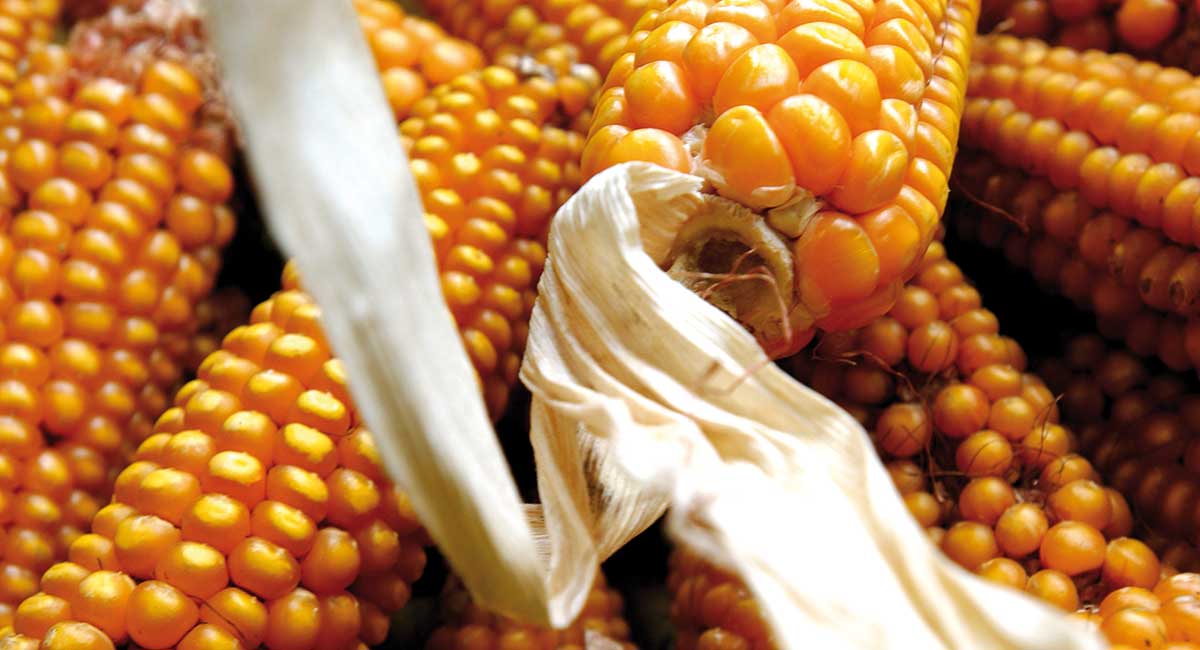




Ghana Office: +233 302 54 8838
e-mail:
Ntiful Ave
GD - 163 - 7893
East Legon
Accra
Ghana


Plant with significant vegetation, very good standability and good for fresh maize used for roasting and boiling maize, and for fodder as a silage crop.
Good Grey leaf spot (GLS) tolerance which is common in the highlands of west and central Africa, moderately resistant to Northern Leaf Blight, cob disease and moderate Maize Streak Virus (MSV) tolerance.
High yielding, thick cobs with dent grain texture. Farmer's choice for livestock feeds and fresh maize production as well as yellow grain.
It is N-use efficient, respond to fertilization and free weed ecology.
75cm X 25cm to give 53 000 plants per hectare though plant population of upto 60 000 plant per hectare can be recommended with good fertilization.
Like most maize crops, 6-8 bags of NPK / HA and 2-3 bags of urea in split application, inputs should be based on soil analysis. (50KG fertilizer bag).
Yellow dent grain texture.
25 kg or 50,000 kernels per hectare
Like most maize crops, 6-8 bags (50 kg fertilizer bag) of NPK /ha and 2 – 3 bags of urea (preferably in split application), although the rate should be based on soil analysis.
9 – 10 t/ha with good crop management
Plante à fort développement végétatif, très bon maintien. Variété adaptée à la consommation en frais, grillé ou bouilli. Variété adaptée à l’alimentation animale (ensilage).
Bonne tolérance à la maladie des tâches grises du feuillage (Grey Leaf Spot - GLS) fréquente dans les hauts plateaux d’Afrique de l’Ouest et Centrale. Moyennement résistante au Northern Corn Leaf Blight (NCLB), aux maladies de l’épi, et tolérance modérée au Maize Streak Virus (MSV).
Variété à haut rendement, épi large avec des grains dentés. Le choix préféré de l’agriculteur pour l’alimentation animale, la production de maïs frais ou pour le grain jaune.
Variété à bonne efficience d’utilisation de l’Azote (NUE - N-use efficient), elle répond très bien à l’apport de fertilisants, surtout en situation de bonnes pratiques culturales (sans mauvaises herbes).
75 cm x 25 cm afin d’obtenir une densité de 53 000 plantes/hectare. Une densité de semis supérieure à 60 000 plantes/ha peut être recommandée avec une fertilisation adaptée.
Variété à grains jaunes dentés.
25 kg/ha ou 50 000 grains/ha.
Comme la plupart des cultures de maïs : 6-8 sacs (50 kg) de NPK/ha et 2-3 sacs d’urée (à fractionner de préférence). La quantité totale d’engrais à apporter doit être définie en fonction de l’analyse de sol.
9-10 T/ha avec de bonnes pratiques agricoles.